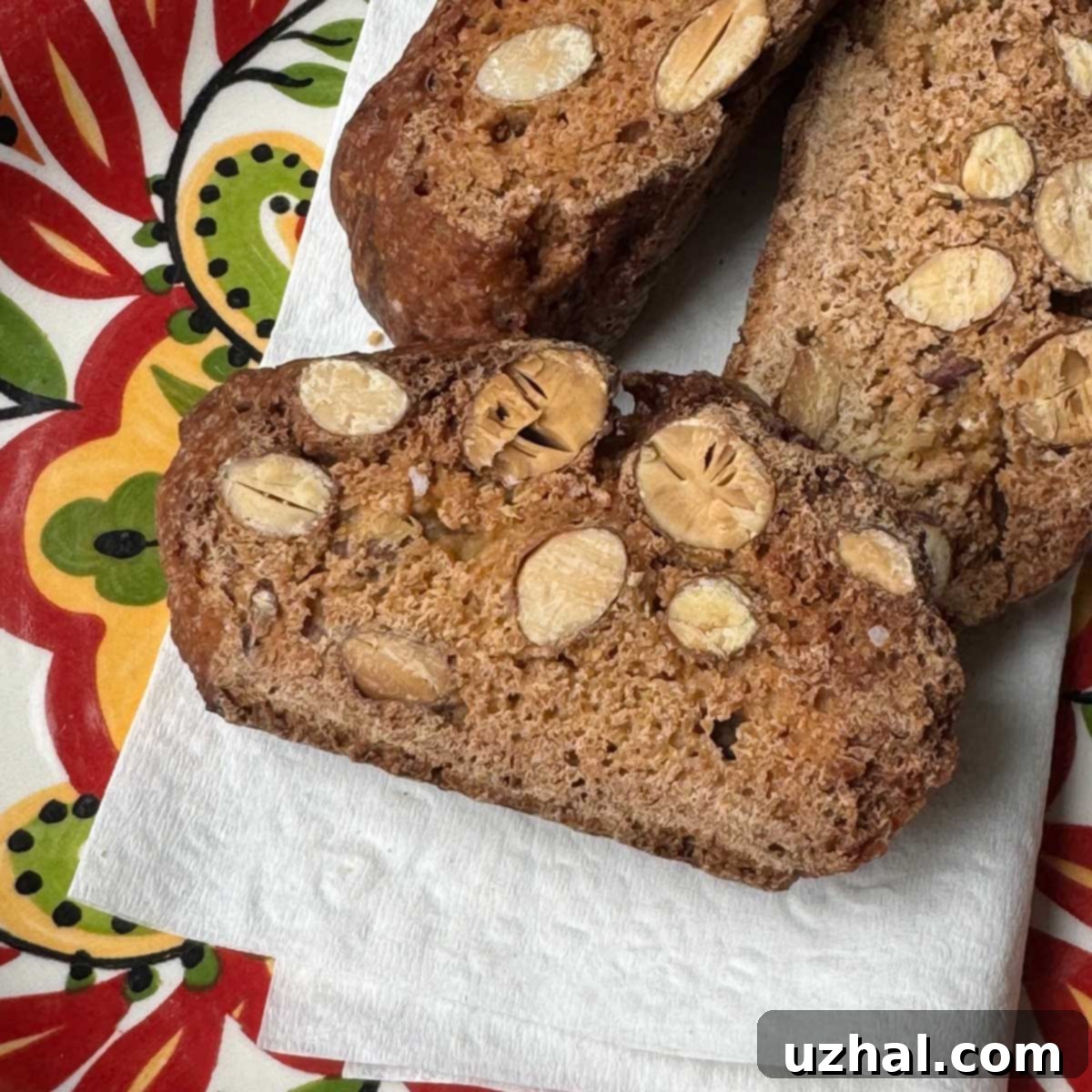Authentic Toasted Almond Cantuccini (Italian Biscotti) Recipe: Traditional & Low-Carb Variations
There’s a special comfort in revisiting cherished memories, especially when those memories are intertwined with the magic of food. My journey with Toasted Almond Cantuccini, often called Biscotti, began years ago after a truly unforgettable trip to Florence, Italy. That experience, a precious opportunity given my current health limitations, sparked a culinary adventure that continues to bring immense joy and a taste of Tuscany right into my home. Each crunchy bite of these twice-baked delights transports me back to those cobblestone streets and sun-drenched piazzas, a comforting embrace of the past through flavor.
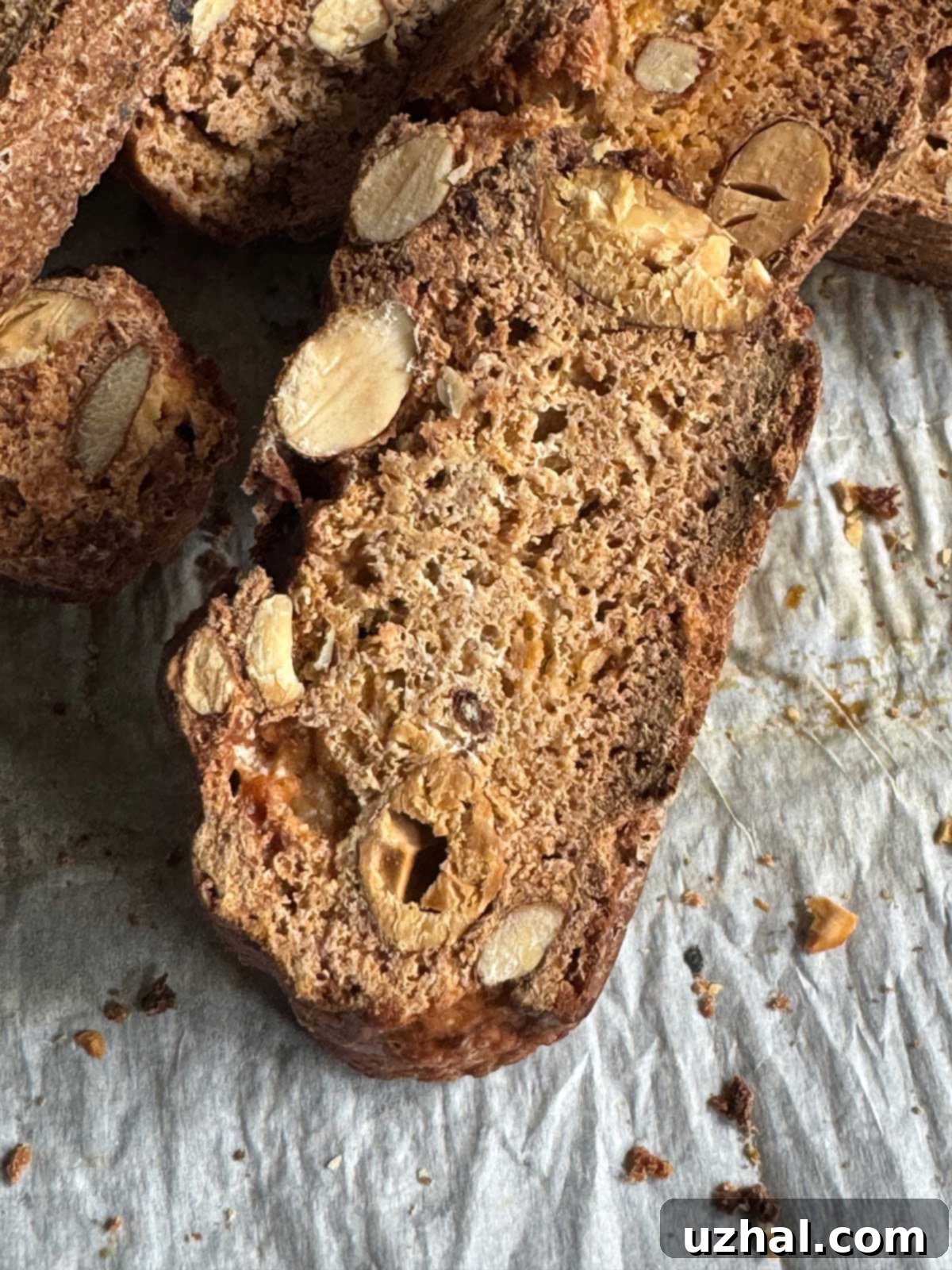
Cantuccini vs. Biscotti: Unraveling the Italian Delight
During my time in Italy, I quickly learned a fascinating distinction: what we commonly refer to as “biscotti” in the U.S. are traditionally known as “cantuccini” in Florence and the wider Tuscany region. While “biscotti” is a general term for any cookie that’s “twice-baked” (from the Latin bis coctus), cantuccini specifically denote these particular almond biscuits, often enjoyed with a glass of Vin Santo. My initial recipe honored this regional nomenclature, dubbing them Coconut Palm Sugar Cantuccini, a nod to the trending ingredient of the time which imparted a subtle, delicious burnt caramel flavor.
Over the years, this beloved recipe has evolved with my dietary preferences and new ingredient discoveries. While the essence remains, I’ve experimented with various sweeteners, including brown sugar, and more recently, low-carb options like Truvia brown sugar and Fiber Gourmet flour. This adaptability ensures that everyone can enjoy the crisp, nutty goodness of these Italian classics, whether they prefer a traditional treat or a mindful, lower-carb alternative. The beauty of this recipe lies in its versatility, allowing you to tailor it to your taste without sacrificing authenticity.
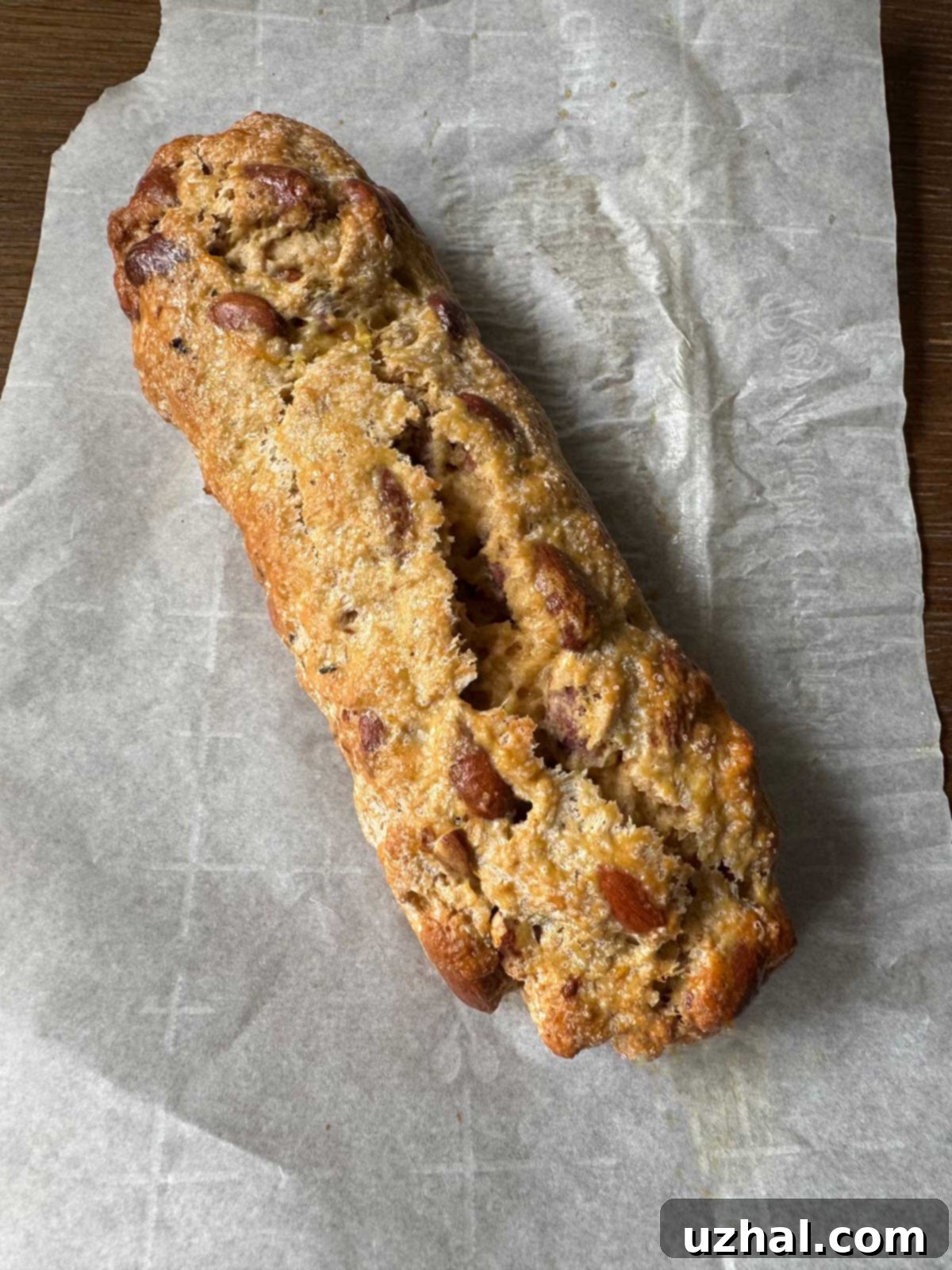
A Legacy of Flavor: Honoring Susan of Food Blogga
The foundation of this exquisite cantuccini recipe comes from a source I deeply admire: Susan of Food Blogga. Susan was one of the kindest and most generous food bloggers I had the privilege of knowing. Her Italian heritage deeply influenced her cooking, and this biscotti recipe was a cherished family heirloom, passed down through generations. Though her family simply called them “biscotti,” I often use both names—cantuccini for the Florentine tradition and biscotti as a broader, familiar term—to celebrate both the specificity and universality of this delightful cookie.
Susan’s warmth and generosity extended beyond her recipes; she genuinely connected with her readers and fellow bloggers. I regret not having more time to know her better before her passing, but her spirit truly lives on through the delicious traditions she shared. This recipe is not just about ingredients and steps; it’s a testament to the power of food to connect us to our past, our heritage, and the beautiful souls who shared their passion for cooking. Every time I bake these almond cantuccini, I’m reminded of her kindness and the authentic Italian flavors she introduced to so many.
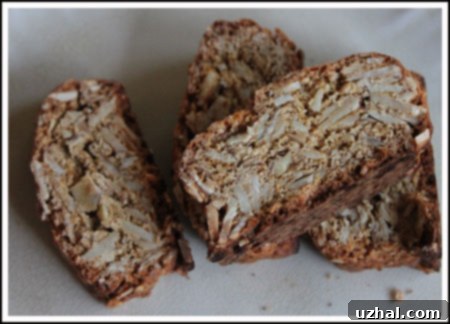
Mastering the Dough: Tips for Perfect Toasted Almond Cantuccini
This particular version is a slightly smaller batch than Susan’s original, making it perfect for home bakers. One common concern, especially for those experimenting with coconut sugar or fiber-rich flours like Fiber Gourmet, is that the dough might appear quite dry. It’s crucial not to worry about this! This dense texture is characteristic of authentic cantuccini dough. Instead of adding more liquid indiscriminately, trust the process.
The key to bringing this dough together lies in using your hands. Get in there and press, knead, and squeeze the mixture until it forms a cohesive ball. The warmth of your hands helps to meld the ingredients and activate the gluten (if using traditional flour) or bind the alternative flours. If, after a few minutes of hand-kneading, the dough still feels stubbornly dry and crumbly, a small drizzle of extra beaten egg can be your savior. Add it sparingly, a teaspoon at a time, until the dough just comes together. The goal is a firm, manageable dough, not a wet, sticky one.
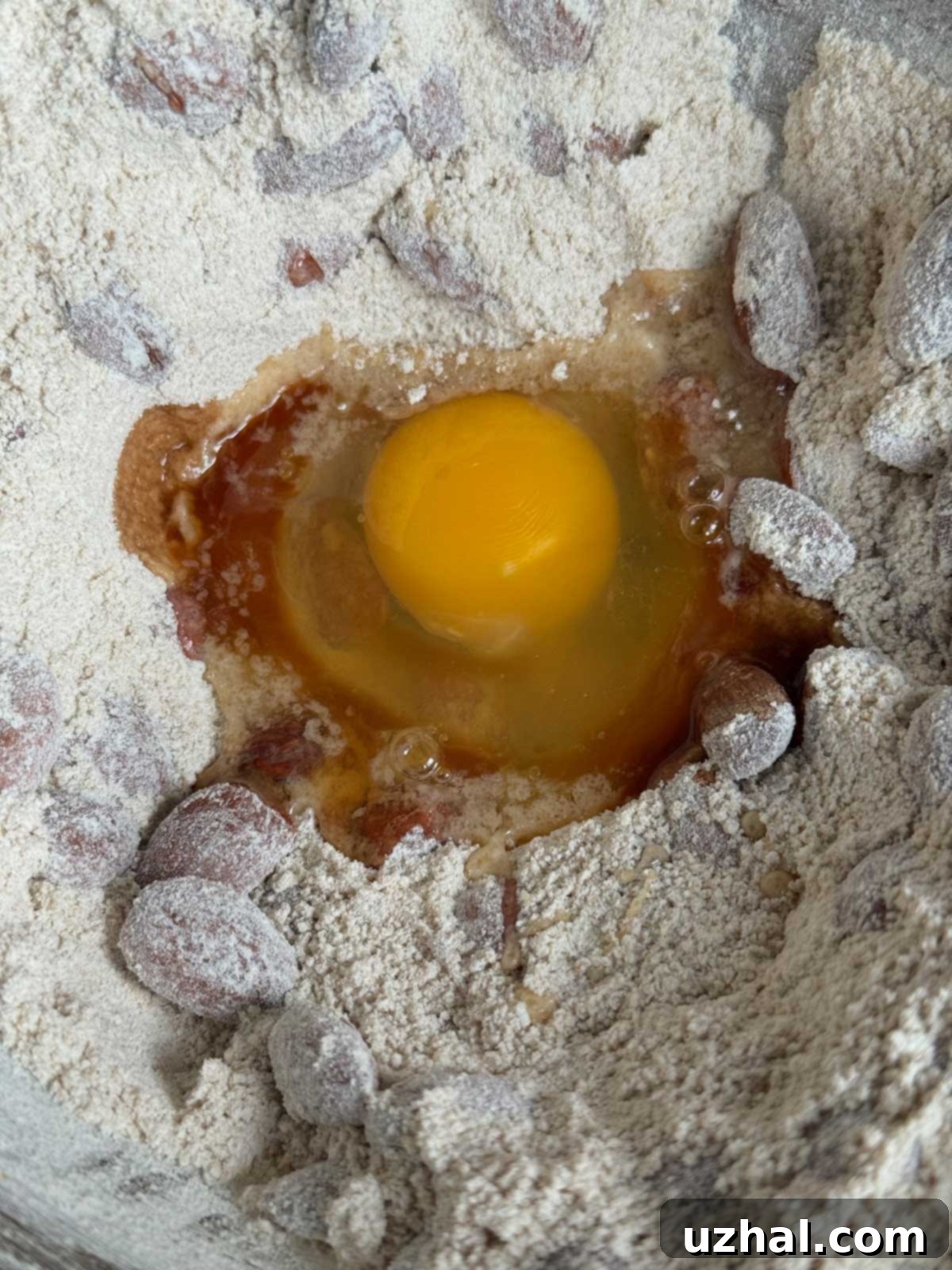
Flavor Profile: A Symphony of Italian Aromas
The flavor notes in these toasted almond cantuccini are truly delightful: a warm and inviting blend of burnt caramel, bright orange, nutty almond, and subtle cinnamon. The caramel notes, especially pronounced with coconut palm sugar, add depth and richness. The orange zest brightens the entire profile, cutting through the sweetness and complementing the earthy almonds. Cinnamon provides a comforting warmth, tying all the elements together into a harmonious, distinctly Italian flavor experience. This combination makes them incredibly satisfying, whether you’re enjoying them for breakfast, as a midday snack, or alongside a classic Italian dessert wine.
The Art of the Twice-Baked Cookie: Achieving Perfect Crunch
The defining characteristic of biscotti (and thus cantuccini) is their iconic crunch, achieved through a unique twice-baked process. The first bake transforms the dough logs into tender loaves, while the second bake, after slicing, is what gives them their signature crispness and extended shelf life. Understanding this process is key to achieving that perfect texture every time.
First Bake: Forming the Loaves
After preparing your dense dough, it’s divided into two equal portions and shaped into long, relatively flat logs. Remember to space them out on your baking sheet, as they will spread during this initial bake. Brushing the tops with a lightly beaten egg before baking not only gives them a beautiful golden sheen but also helps in achieving that slightly darker, shiny top mentioned in the recipe. The first bake is all about cooking the dough through and setting its shape.
Cooling and Slicing: The Critical Transition
Once the loaves emerge from the oven, dark and shiny, resisting the urge to slice them immediately is crucial. A cooling period of about 15-20 minutes on a wire rack allows them to firm up slightly. This makes slicing much easier and prevents crumbling. A large serrated knife is your best friend here; it glides through the baked logs, creating those characteristic diagonal slices that are neither too thin nor too thick—aim for about ¾ of an inch. Keep your oven on or warm during this short cooling phase, as it will be needed for the second bake.
Second Bake: The Crunch Factor
This is where the magic truly happens! After slicing, arrange your cantuccini pieces, cut-side down, back onto the baking sheets. With the oven now turned off but still warm, place the baking sheets back inside. The residual heat of the oven slowly dries out the cookies, making them incredibly crisp without further browning. The longer they stay in the warm oven—anywhere from 30 to 60 minutes—the harder and crunchier they will become. This extended, gentle drying is what gives them their remarkable snap and allows them to be stored for weeks, a tradition born out of necessity for travelers and soldiers in ancient times. Once cooled completely, they are ready to be stored in an airtight container, preserving their perfect texture.
Serving Suggestions and Storage
Traditional Italian custom dictates serving cantuccini with Vin Santo, a sweet dessert wine from Tuscany. The wine softens the crisp cookie, creating a delightful textural contrast. However, these versatile almond biscuits are equally wonderful dipped in a steaming cup of coffee, espresso, or tea. Their robust flavor holds up beautifully against strong brews, making them an ideal accompaniment for a morning pick-me-up or an afternoon treat.
To keep your homemade Toasted Almond Cantuccini at their best, store them in an airtight tin or container at room temperature. They will maintain their crispness and fresh flavor for several weeks, making them perfect for gifting, entertaining, or simply enjoying whenever a craving strikes. These elegant yet simple cookies are truly a testament to timeless Italian baking traditions.
- Toasted Almond Cantuccini
- Sweet and Salty Double Nut Toffee Brownie Bars
- Coconut Palm Sugar Chocolate Chip Cookies
- Best Gingerbread Biscotti Recipes
- Updated Palm Beach Brownies
Recipe: Toasted Almond Cantuccini (Coconut Sugar / Low Carb)
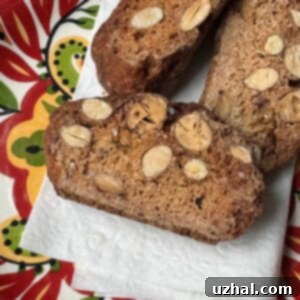
Coconut Palm Sugar aka Coconut Sugar Cantuccini
Anna
Pin Recipe
Ingredients
- 2 cups whole almonds or sliced almonds
- ⅔ cup tightly packed sugar (can use coconut, brown or even brown Truvia for a low-carb version)
- 1 teaspoon orange zest
- ¼ teaspoon ground cinnamon
- 1 ¼ teaspoons baking powder
- ¼ teaspoon Kosher salt
- 1 ⅔ cups all purpose flour (or Fiber Gourmet for low carb, approximately 210 grams)
- 2 large eggs (or jumbo for slightly more moisture)
- ¾ teaspoon pure vanilla extract
- An egg (lightly beaten for brushing tops of loaves before the first bake)
Instructions
-
Preheat your oven to 350 degrees F (175 degrees C). Line a large cookie sheet with parchment paper or non-stick foil to prevent sticking.
-
Spread the almonds in a single layer on the prepared cookie sheet. Toast them in the preheated oven for 8-10 minutes until lightly golden and fragrant. Remove and set aside to cool completely.
-
In a large mixing bowl, combine the sugar with the orange zest. Using the back of a large spoon, press the zest into the sugar as you mix, releasing its fragrant oils. Stir in the ground cinnamon, baking powder, Kosher salt, and the cooled toasted almonds. Once thoroughly combined, gradually stir in the all-purpose flour (or Fiber Gourmet).
-
Create a well in the center of the dry mixture. In a separate small bowl, whisk together the 2 large eggs and pure vanilla extract, then pour this mixture into the well. Stir everything together until just combined. The mixture will be very thick and may seem dry, especially with certain sweeteners or flours. Lightly flour your hands and knead the mixture, squeezing it until it comes together to form a cohesive ball. If the dough remains overly dry after kneading for a few minutes, you can drizzle in a tiny bit of extra beaten egg (from the “for brushing” egg) until it just comes together. Divide this ball into 2 equal pieces.
-
On a lightly floured surface or a fresh sheet of non-stick foil or parchment, shape one piece of dough into a log approximately 10 inches long, 2 inches wide, and about ¾ of an inch high. Wetting your hands slightly with water can make shaping easier. Repeat with the remaining dough to create a second log. Place both logs on a baking sheet, ensuring they are spaced far apart to allow for spreading during baking (they will expand about another inch).
-
Lightly brush the tops of the dough logs with the remaining beaten egg. This will give them a beautiful golden finish and slight shine.
-
Bake in the preheated 350 degrees F (175 degrees C) oven for 35 minutes, or until the tops of the loaves are dark golden brown and shiny. Remove from the oven and let them cool on a wire rack for about 15-20 minutes. Important: Keep the oven on or warm during this cooling period for the second bake.
-
After the 20-minute cooling period, turn off the oven. Carefully transfer one loaf to a cutting board. Using a large serrated knife, slice the loaves on the diagonal into cookies approximately ¾ of an inch thick. Arrange the slices, cut-side down, back onto the baking sheets. Place the baking sheets back into the still warm (but now off) oven with the door closed for 30-60 minutes. The longer the cantuccini remain in the warm oven, the harder and crisper they will become. This second “bake” is a crucial drying process.
-
Remove from the oven and let cool completely on a wire rack before storing in an airtight tin or container. This recipe yields about 24 delicious cantuccini.
